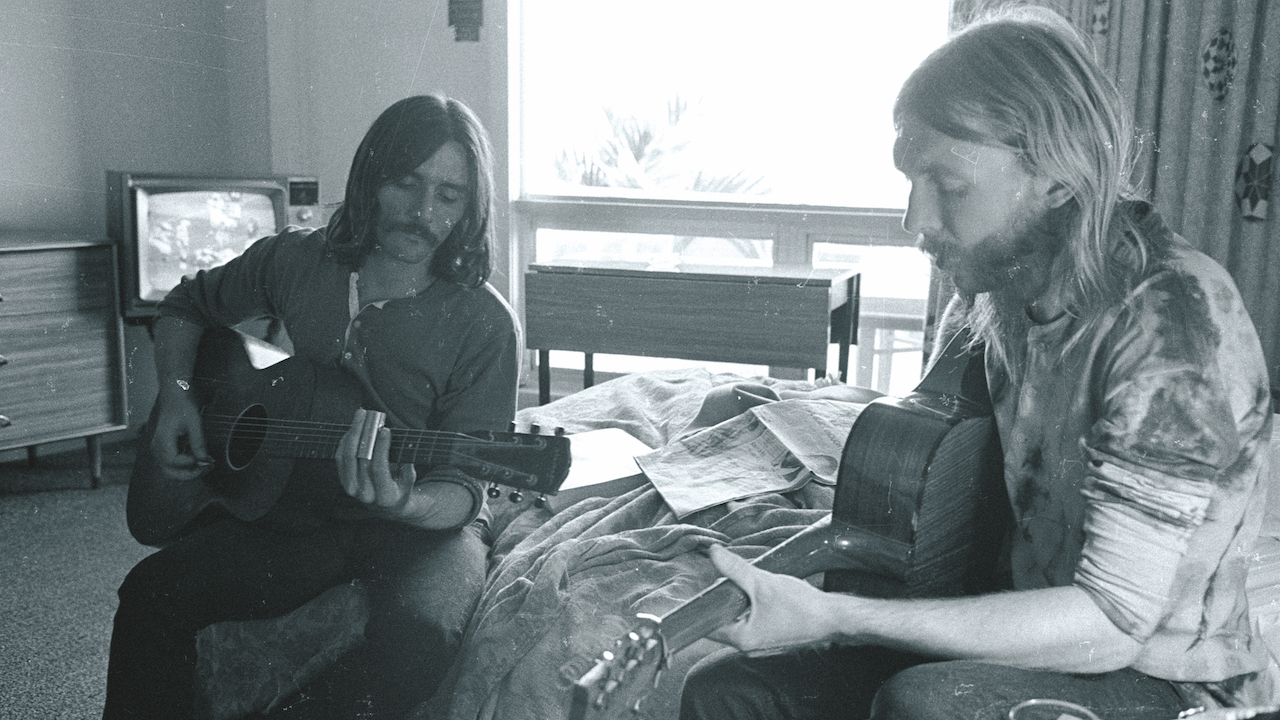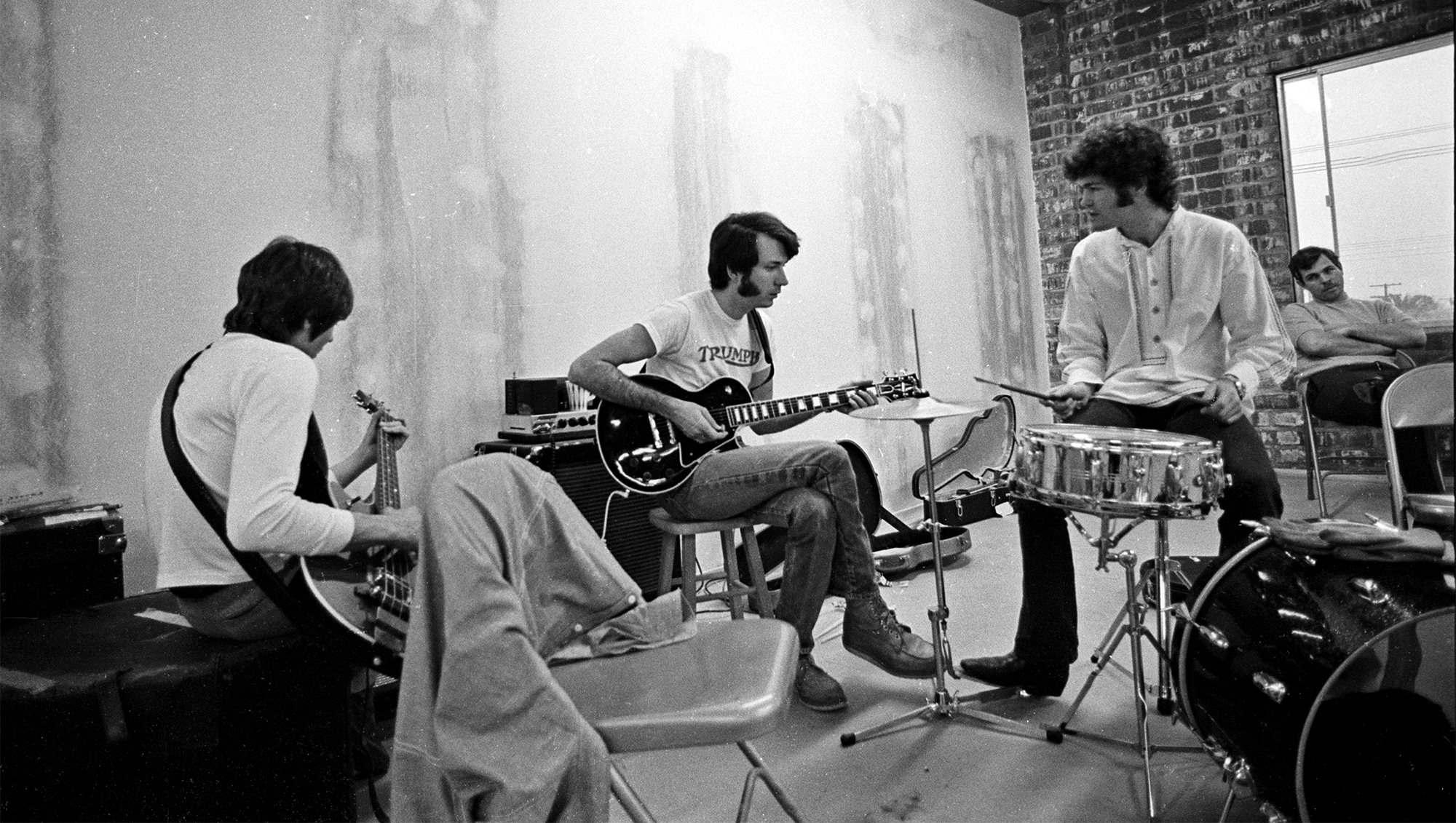"He approached a dreadnought much like he did a Les Paul, attacking leads and muscling the strings to achieve bends and vibrato." These Allman Brothers songs explain why Dickey Betts was a legend on acoustic as well as electric
You can rock classics like "Blue Sky" and "Ramblin’ Man" — as well as most of Betts' material — with nothing more than an acoustic guitar

Dickey Betts grew up listening to country, bluegrass and fiddle tunes, so most of his songs were born from acoustic seeds that sprouted into epic electric arrangements with the Allman Brothers Band. With that said, you can still rock classics like "Blue Sky" and "Ramblin’ Man" — as well as most Betts material — with nothing more than an acoustic guitar.
Betts, who died this past April 18, incorporated more fingerpicking in his acoustic work than in his electric, but — onstage, at least — he approached a dreadnought much like he did a Les Paul, attacking leads in a similar way and muscling the strings to achieve bends and vibrato. In the studio, however, Betts and his fellow Brothers used acoustic elements creatively. Here’s a closer look at a few choice cuts.
"Little Martha"
This acoustic instrumental in open E tuning (low to high, E B E G# B E) first appeared as a guitar duo on 1972’s Eat a Peach. Duane Allman wrote it and laid down the main part on a resonator shortly before his passing in late 1971. Betts overdubbed the harmony line on a flattop. Their synchronicity makes it sound like a single player at times. Leo Kottke described "Little Martha" as “possibly the most perfect guitar song ever written,” and his arrangement is perfect for a solo player. It’s even more fun to play it with a buddy, Dickey-and-Duane style.
"Midnight Rider"
Gregg Allman wrote "Midnight Rider," and Duane played acoustic on the studio version, while Betts played the lyrical electric lead. For a cool bluesy take that works well on a big box, check out Gregg’s solo version played in double Drop D (low to high, D A D G B D).
"Jessica" / "Revival"
Both are in the key of A and have acoustic intros. Betts played the primary electric part on his instrumental masterpiece, "Jessica," while Les Dudek, who also plays the second electric part, played the acoustic. It takes at least two players to do justice to "Jessica." Betts penned the hippie anthem "Revival" with its singalong chorus of “People can you feel it? Love is everywhere.” Duane played acoustic on the studio version. Acoustic guitar provides framework for the lovely leads that define "Jessica" as well as the extensive introduction on "Revival." That tune works well campfire-style if you simply jump in after the prelude. The “second intro” riff is sort of an elder sister to Jessica.
"Pony Boy"
Betts penned this acoustic closer from 1973’s Brothers & Sisters, and it’s a fine example of how he mixed things up in the studio to provide a different tonality. Summoning some Allman signatures after the tragic loss of Duane, he plucks a Dobro in open E tuning and incorporates some fine slide. "Pony Boy" also featured Tommy Talton sitting in on acoustic guitar.
"Seven Turns"
This Betts gem is the title track from the ABB’s 1990 comeback, which was the first to feature Warren Haynes on second guitar. It’s a major cowboy-style picker and strummer that rolls along simply, until the bridge solo takes a few minor twists and turns in Betts’ recognizable harmonic style. If you’re looking to sit down to strum and sing a Betts-based Allman Brothers tune with your friends, this is a great choice.
All the latest guitar news, interviews, lessons, reviews, deals and more, direct to your inbox!
Jimmy Leslie is the former editor of Gig magazine and has more than 20 years of experience writing stories and coordinating GP Presents events for Guitar Player including the past decade acting as Frets acoustic editor. He’s worked with myriad guitar greats spanning generations and styles including Carlos Santana, Jack White, Samantha Fish, Leo Kottke, Tommy Emmanuel, Kaki King and Julian Lage. Jimmy has a side hustle serving as soundtrack sensei at the cruising lifestyle publication Latitudes and Attitudes. See Leslie’s many Guitar Player- and Frets-related videos on his YouTube channel, dig his Allman Brothers tribute at allmondbrothers.com, and check out his acoustic/electric modern classic rock artistry at at spirithustler.com. Visit the hub of his many adventures at jimmyleslie.com






